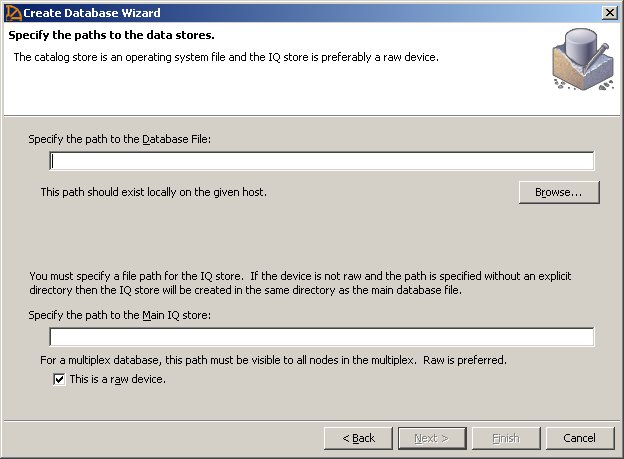The next dialog prompts you for the location of the data stores. You must specify the full path to the database file and the main IQ or catalog store. After you define the path(s) to the data stores, click Next to move to the next dialog.

Type the full path to the database file. This path should be on a local file system. Sybase does not recommend placing database files on shared file systems. If the host where the new database is to be created is the local host, use the Browse button to choose the path.
![]() Folder and file names are case sensitive on UNIX systems.
Folder and file names are case sensitive on UNIX systems.
Type the full path to the IQ store. The IQ store is the main segment file that contains the Sybase IQ data. Make certain that the database path is on a device large enough to accommodate some growth. If you do not provide a path, Sybase IQ uses the path to the database file.
If you plan to use multiplex functionality, this path must be visible to all database hosts for multiplex databases, and a raw device is required.
Raw device naming conventions differ on UNIX and Windows.
On UNIX, raw device names vary by operating system. Check your operating system documentation for the correct format.
On Windows, you can specify the drive letter to name a raw devices. Do not include path separator characters (“\\.\”) in the device name when you name a raw device in Sybase Central.
If you have no raw device, deselect the raw device option.
![]() For more information about naming raw devices, see,
Chapter 5, Working
with Database Objects in System Administration Guide: Volume 1.
For more information about naming raw devices, see,
Chapter 5, Working
with Database Objects in System Administration Guide: Volume 1.